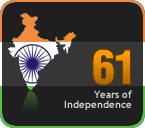
Location : 2 Miles off Curacao - 12 03 N, 068 54 W
Before I begin, a disclaimer. The following has been told to me by the people attending the vessel such as the pilots and the agents so it might actually be the truth. I will need to verify the facts once I get down, but till then, here's the story as I heard it:-
I am right now a couple of miles from the Island of Curacao, fueling up for the long voyage up to the West coast of Africa & the place looks as beautiful as I remember it. The sun is out & the Island looks every bit as inciting as it is made out to be
by the tourist broucher.
But the last time I was in Curacao, I saw the most distressing sight to be seen in a tourist hot spot. Right in the middle of the Willemstad Bay, at any time of the day, you can see a huge oil slick floating around for all to see. This was explained to
me by a story that does not seem so shocking these days.
The Island of Curacao really gained any prominence only in the second world war, when the allies installed big storage tanks in the Bay Of Willemstad and used it as a fueling depot. For people who haven't been to Willemstad, its a natural deep water
cove, that can be approached only from a narrow entrance & surrounded on all sides by cliffs. It must have been a great safe haven in the war. So once the tanks have been set up in the war, The Shell oil & Gas company stepped in and set up a refinery
in the place and operated the place from the forties to the mid eighties. Now here's the shocker - The oil tanks in the refinery did not have any oil retaining bottom. What that meant was that as you pumped in oil in those tanks, the oil would simply
seep into the ground. They weren't bothered about that, firstly, because the oil quantity seeping in was considered too less to actually install bottoms to be cost effective & secondly, oil had after all come out from the ground so there couldn't be
much wrong if a bit of it went back.
As this went on for about fifty years, Shell found out in the seventies that the whole refinery was sitting on so much oily mud that it had actually started seeping out of the mud of the Island.
In the picture above, you can see the oil in the water, and on the shore you can see a trench. The Islanders have now dug trenches right around the refinery's premises & what happens is that a lot of oil gets accumulated in these trenches throughout the
night and is then sucked out by tankers that take rounds in the mornings. I think in the next hundred years the oil should have pretty much seeped out totally to not be considered a hazard.
In the meanwhile, to avoid any action, Shell sold the Isla refinery to the Netherland Antilles government for one dollar.






















